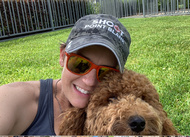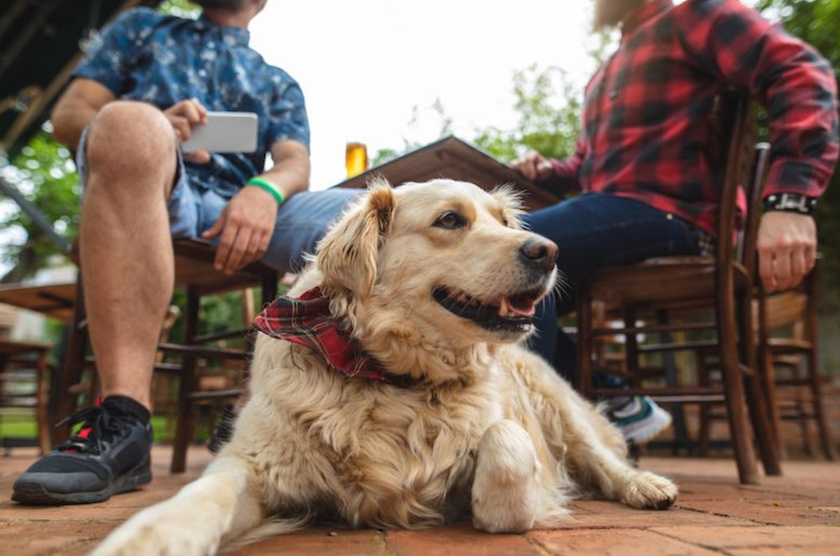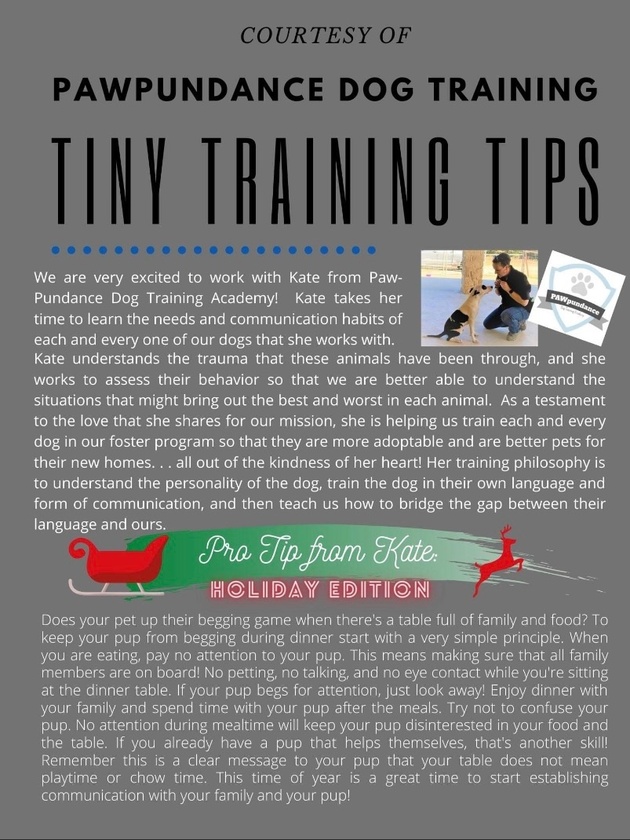
It’s ok! We’re here to help. We speak a little dog and can help translate for both of you. It’s probably just a miscommunication! And we are here to help get you both speaking the same language! Woof!
Connect with the PAWpundance training team and other members of the dog community to discuss better ways to communicate with your furry house guest.
**To get started USE code: TRIAL1month **
We use the term body language when we discuss physical communication. But what is the difference between communication and language. Language is the transfer of thoughts and ideas. Whereas communication is the transfer of emotion and tone. The contention is that animals have communication but not language. The term "body language" then is a misnomer. "Body communication" is probably a more accurate term.
When dogs bark they are not transferring specific ideas or thoughts. They are actually using pitch and volume to communicate emotion. Dogs unlike humans do not have a language.
Humans communicate mostly by verbal means. We give our thoughts and ideas very succinctly and sometime sloppily. We also have body communication. Some of us are adept at reading these cues but most of us just react rather than respond. We have direct eye-contact, square shoulders and open palms for example to show honesty. When we meet a new dog we like to pat them on the top of the head. With dogs, they have soft, indirect eye-contact with look-aways. The pups use soft angles and stay off-center to show they are calm. And when we greet them, they prefer we pet them with low contact under their nose.
Dogs are constantly watching our body movements to be able to react to us and figure out our world. Like a hearing-impaired person watching their world for cues, the dogs are watching us our next move. Our center-of-gravity gives the biggest hint as to our movements. Because of this, dogs are watching our hips and waist. Subtle hip movements forward and backward will cause our pups to respond. And the next cue is the chest and shoulders. Dogs will move forward and backwards based on hips, but up and down based on shoulders. If we bend over the pups too far, the pups will jump up to match our height. We can use our arms to help direct or redirect eye-contact or focus. Lastly eye-contact can help communicate emotion.
If I want a dog to sit using simply body contact, I want to stand in a "fight" stance. Instead of standing square and parallel to the pup, put one foot back and stand perpendicular. This allows you to rock forward and backward easily. It also keeps our body weight softer. I keep my hands in at my chest and point at my nose. This draws attention to my eyes. By looking up, the dog, who is normally horizontal becomes more diagonal. If we rock the pup back on their hips by moving forward into our hips, then ask the pup to look up with eye contact. After this a slight lean will guide the pup into their hips and to a sit. If we bend over too far, the dog will jump. If we are square to the dogs, it will be a confrontation and they will jump. This is very nuanced. Your back foot is where all the movement comes from. Push off and turn the foot. This will cause the hips to rock forward and twist. The twist will be just enough forward movement to guide the pup down to a sit.
The next behavior is a down. Once the pup is in a sit. We need to bring the dog forward and down. So hips back for the forward motion and bring your chest down to guide the dog down. In the beginning, it's like a big lunge. But later, its move of a subtle rocking of the hips back and forth.
Eventually, we add physical cues and verbal cues. The body language is always available because it's a reaction. If the cues ever diminish then go back to this communication and bring the cues back. This will help reinforce your cues to stimulation control. Karen Pryor in Don't Shoot the Dog! calls "Stimulus Control". (Find more info on page 73)
1. The pup responds to the cue when given
2. The pup doesn't "throw" the behavior in when you haven't said the cue
3. The pup doesn't mix up cues and behavior - You say A and get B
4. The pup doesn't mix up cues and behavior - You say A and get ANY thing else or nothing.
Body communication is just reacting to the movement of the other. Cues are reinforced behaviors. These are not always going to work. Just like humans don't all communicate very clearly. Some people are rude and oblivious. Some dogs were not socialized and some dogs are dealing with fears and anxieties. Some dogs were conditioned not to respond. So this is not fool-proof, however, when working with a puppy or a dog for the first time - it's worth a shot. I
f the dog does not respond to typical dog communication, then it's time to go to shaping and other techniques. It might be worth considering why the pup is not responding as well. While you might be interested in training your pup yourself, you might consider going to a trainer or behavior specialist to get a behavior assessment done on your pup. Abnormal body communication could be the result of some other issues and it might be something you can tackle but getting it diagnosis would be good to know as early as possible.
It's very important to learn more about how dogs communicate. Understanding their communication will be very beneficial to your relationship. Say you met a new friend and you didn't speak the same language. Wouldn't you learn a little bit more of their language before forcing your language upon them? So let's have some empathy for our pups and try to learn a little bit more about them! There are some great resources! Turid Rugaas is a great author and has DVD's available about dog body language. And also Sarah Kalnajs has a good DVD based on a series of lectures she presented Here is a link to here DVD: https://amzn.to/3hrac1m
If you have any questions about specifics please post videos and ask! If you want to know more, stay tuned! I am always happy to respond to questions. I understand there is a lot that is misunderstood. We are all learning more gaining wisdom together!!
Welcome to PAWpundance Dog Training Academy on Locals.com!
We’re thrilled that you’ve joined our community! PAWpundance is a place for positive, dog-loving people to come together, share experiences, and help each other grow. Locals offers an “ad-free experience,” so even a small contribution helps support our tech and keeps our community thriving.
We want to see your furbabies!
We’re here to assist with any questions you may have about training, behavior, and more. At PAWpundance, we believe in blending knowledge with a bit of fun—expect plenty of paws, puns, and maybe even a dance or two! Together, let’s enjoy some laughs and build stronger relationships with our pups.
Our Philosophy:
We’ve invited another species to live in our homes, and our dogs are much more than accessories; they’re our guests. They don’t speak our language, and like in the movie E.T., we don’t want to be the intimidating figures trying to coerce a scared, confused being. Instead, we want to be like ...
Eye Contact, Eye Contact, Eye Contact!
Reward every glance. Start by reinforcing brief glances, then encourage your pup to hold your gaze a bit longer. Gradually phase out your part of the eye contact—your pup will learn to watch you and adapt to your movements naturally. This approach helps them learn to walk with you without relying on leash cues.
Remember, the leash is purely for safety—not for communication.
Take a look at this video with Meghan and Buckee. Buckee is watching Meghan closely, and she rewards him by making eye contact, smiling, and offering treats. Meghan also looks forward occasionally, teaching Buckee to walk with her in sync.
Notice that Buckee is a reactive pup, so the leash is essential for safety, especially if he responds to something unexpectedly. However, it’s only used for physical control when necessary. When Buckee refocuses, Meghan reestablishes instructional control, and they continue their walk together. She does a fantastic job of engaging with him! In ...
Loose-Leash Walking Tip:
Where you reward makes a big difference! Try using the hand on the same side as your dog when giving treats or praise.
When you reach across your body to reward with the opposite hand, it draws your dog’s nose in front of you, encouraging them to move ahead and potentially start pulling.
In the video of Meghan and Domino, Meghan holds the leash with her left hand while Domino walks on her right. She rewards him by petting and giving treats with her right hand. This keeps Domino walking by her side on a loose leash, rather than in front, pulling her along.
Next time you’re out walking with your pup, try rewarding with the hand on the same side as your dog.
https://twitter.com/wholedogjournal/status/1295508215740932098?s=21
How to teach you pup to be a good dining companion! What a great skill!

https://twitter.com/wholedogjournal/status/1292609106637987840?s=21
This is about counter-surfers, but I love the description of trying to shame dogs. This author, Pat Miller helped me understand this concept in her book the Power of Positive Dog Training.
If you’re still on Twitter, the Whole Dog Journal is a great group to follow. Lots of fantastic info!













